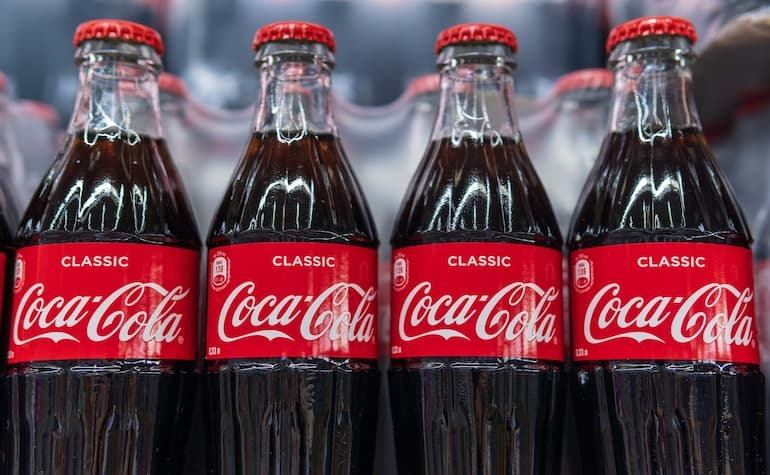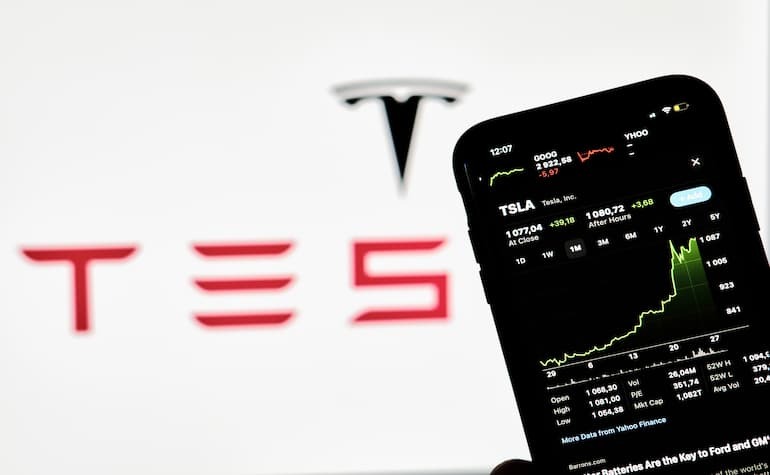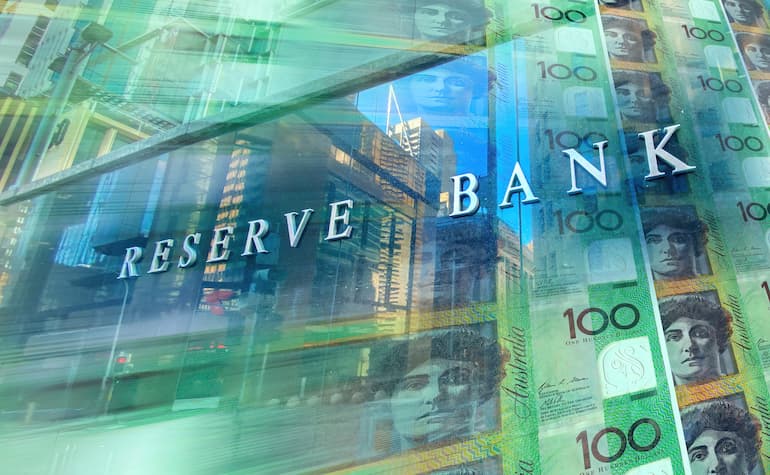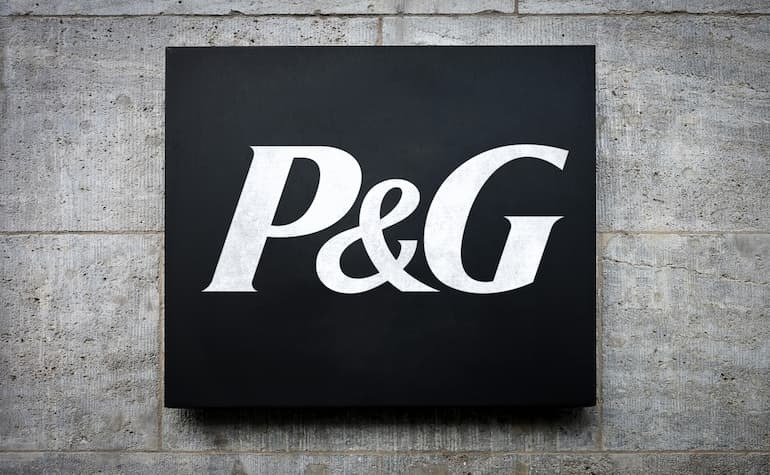Noticias del mercado & perspectivas
Anticípate a los mercados con perspectivas de expertos, noticias y análisis técnico para guiar tus decisiones de trading.

Multi-Timeframe (MTF) analysis is not just about checking the trend on the daily before trading on the hourly; ideally, it involves examining and aligning context, structure, and timing so that every trade is placed with purpose.
When done correctly, MTF analysis can filter market noise, may help with timing of entry, and assist you in trading with the trending “tide,” not against it.
Why Multi-Timeframe Analysis Matters
Every setup exists within a larger market story, and that story may often define the probability of a successful trade outcome.
Single-timeframe trading leads to the trading equivalent of tunnel vision, where the series of candles in front of you dominate your thinking, even though the broader trend might be shifting.
The most common reason traders may struggle is a false confidence based on a belief they are applying MTF analysis, but in truth, it’s often an ad-hoc, glance, not a structured process.
When signals conflict, doubt creeps in, and traders hesitate, entering too late or exiting too early.
A systematic MTF process restores clarity, allowing you to execute with more conviction and consistency, potentially offering improved trading outcomes and providing some objective evidence as to how well your system is working.
Building Your Timeframe Hierarchy
Like many effective trading approaches, the foundation of a good MTF framework lies in simplicity. The more complex an approach, the less likely it is to be followed fully and the more likely it may impede a potential opportunity.
Three timeframes are usually enough to capture the full picture without cluttering up your chart’s technical picture with enough information to avoid potential contradiction in action.
Each timeframe tells a different part of the story — you want the whole book, not just a single chapter.

Scalpers might work on H1-M15-M5, while longer-term traders might prefer H4-H1-H15.
The key is consistency in approach to build a critical mass of trades that can provide evidence for evaluation.
When all three timeframes align, the probability of at least an initial move in your desired direction may increase.
An MTF breakout will attract traders whose preference for primary timeframe may be M15 AND hourly, AND 4-hourly, so increasing potential momentum in the move simply because more traders are looking at the same breakout than if it occurred on a single timeframe only.
Applying MTF Analysis
A robust system is built on clear, unambiguous statements within your trading plan.
Ideally, you should define what each timeframe contributes to your decision-making process:
- Trend confirmed
- Structure validated
- Entry trigger aligned
- Risk parameters clear
When you enter on a lower timeframe, you are gaining some conviction from the higher one. Use the lower timeframe for fine-tuning and risk control, but if the higher timeframe flips direction, your bias must flip too.
Your original trading idea can be questioned and a decision made accordingly as to whether it is a good decision to stay in the trade or, as a minimum action, trail a stop loss to lock in any gains made to date.
Putting MTF into Action
So, if the goal is to embed MTF logic into your trade decisions, some step-by-step guidance may be useful on how to make this happen
1. Define Your Timeframe Stack
Decide which three timeframes form your trading style-aligned approach.
The key here is that as a starting point, you must “plant your flag” in one set, stick to it and measure to see how well or otherwise it works.
Through doing this, you can refine based on evidence in the future.
One tip I have heard some traders suggest is that the middle timeframe should be at least two times your primary timeframe, and the slowest timeframe at least four times.
2. Build and Use a Checklist
Codify your MTF logic into a repeatable routine of questions to ask, particularly in the early stages of implementing this as you develop your new habit.
Your checklist might include:
- Is the higher-timeframe trend aligned?
- Is the structure supportive?
- Do I have a valid trigger?
- Is risk clearly defined?
This turns MTF from a concept into a practical set of steps that are clear and easy to action.
3. Consider Integrating MTF Into Open Trade Management
MTF isn’t just for entries; it can also be used as part of your exit decision-making.
If your higher timeframe begins showing early signs of reversal, that’s a prompt to exit altogether, scale out through a partial close or tighten stops.
By managing trades through the same multi-timeframe approach that you used to enter, you maintain logical consistency across the entire lifecycle of the trade.
Final Action
Start small. Choose one instrument, one timeframe set, and one strategy to apply it to.
Observe the clarity it adds to your decisions and outcomes. Once you see a positive impact, you have evidence that it may be worth rolling out across other trading strategies you use in your portfolio.
Final Thought
Multi-Timeframe Analysis is not a trading strategy on its own. It is a worthwhile consideration in ALL strategies.
It offers a wider lens through which you see the market’s true structure and potential strength of conviction.
Through aligning context, structure, and execution, you move from chasing an individual group of candles to trading with a more robust support for a decision.


The Coca-Cola Company (NYSE: KO) announced the latest financial results for the first three months of 2023 before the market open in the US on Monday. The US Beverage company posted solid results for the quarter, beating both revenue and earnings per share (EPS) estimates. Company overview Founded: January 29, 1892 Headquarters: Atlanta, Georgia, United States Number of employees: 79,000 (2021) Industry: Beverage Key people: James Quincey (chairman and CEO), Brian Smith (president and COO) Owners: Berkshire Hathaway (9.23%), The Vanguard Group (7.90%), BlackRock (6.45%) The results The company reported revenue of $10.959 billion vs. $10.797 billion expected.
Revenues were up by 5% year-over-year. EPS at $0.68 per share (up by 6% from the same period last year) vs. $0.646 per share estimate. CEO commentary ''We are encouraged by our first quarter 2023 results,'' James Quincey, CEO of company said in a press release. ''Our system alignment is stronger than ever, and our networked organization is allowing us to adapt as needed.
We continue to invest for the long term, strengthening our capabilities to drive sustainable value for our stakeholders. We have the right portfolio, the right strategy and the right execution to deliver in the marketplace. We are confident in our ability to deliver on our 2023 objectives,'' Quincey concluded.
The latest results did not have a massive impact on the share price on Monday. The stock was up by 0.41% at $64.25 per share. Stock performance 1 month: +4.74% 3 months: +6.69% Year-to-date: +1.02% 1 year: -2.55% The Coca-Cola Company price targets Barclays: $72 Deutsche Bank: $60 Citigroup: $68 UBS: $72 Morgan Stanley: $70 Wells Fargo: $70 Wedbush: $63 Credit Suisse: $64 HSBC: $76 The Coca-Cola Company is the 30 th largest company in the world with a market cap of $277.94 billion, according to CompaniesMarketCap.
You can trade The Coca-Cola Company (NYSE: KO) and many other stocks from the NYSE, NASDAQ, HKEX, ASX, LSE and DE with GO Markets as a Share CFD. Sources: The Coca-Cola Company, TradingView, MarketWatch, MetaTrader 5, TipRanks, CompaniesMarketCap, Wikipedia


World’s largest automaker, Tesla Inc. (NASDAQ: TSLA), reported Q1 financial results after market close in the US on Wednesday. Elon Musk’s company posted mixed results for the quarter. Let’s take a closer look at how it performed.
Company overview Founded: July 1, 2003 Headquarters: Austin, Texas, United States Number of branches: 764 retail stores/galleries and service centers (2022) Number of employees: 127,855 (2022) Industry: Automotive, renewable energy, artificial intelligence Key people: Elon Musk (CEO), Robyn Denholm (chair) The results Tesla reported revenue that missed analyst estimate at $23.329 billion vs. $23.596 billion expected. Revenues were up by 24% compared to Q1 2022. Earnings per share reported at $0.85 per share (down by -21% year-over-year) vs. $0.846 per share estimate.
The automaker produced 440,808 and delivered 422,875 cars in Q1, up by 44% and 36% year-over-year, respectively. Company commentary ''In the current macroeconomic environment, we see this year as a unique opportunity for Tesla. As many carmakers are working through challenges with the unit economics of their EV programs, we aim to leverage our position as a cost leader.
We are focused on rapidly growing production, investments in autonomy and vehicle software, and remaining on track with our growth investment,'' Tesla said in a letter to shareholders. The company also commented on its pricing strategy: ''Our near-term pricing strategy considers a long-term view on per vehicle profitability given the potential lifetime value of a Tesla vehicle through autonomy, supercharging, connectivity and service. We expect that our product pricing will continue to evolve, upwards or downwards, depending on a number of factors.'' ''Although we implemented price reductions on many vehicle models across regions in the first quarter, our operating margins reduced at a manageable rate.
We expect ongoing cost reduction of our vehicles, including improved production efficiency at our newest factories and lower logistics costs, and remain focused on operating leverage as we scale. ''We are rapidly growing energy storage production capacity at our Megafactory in Lathrop and we recently announced a new Megafactory in Shanghai. We are also continuing to execute on our product roadmap, including Cybertruck, our next generation vehicle platform, autonomy and other AI enabled products.'' ''Our balance sheet and net income enable us to continue to make these capital expenditures in line with our future growth. In this environment, we believe it makes sense to push forward to ensure we lay a proper foundation for the best possible future,'' the statement concluded.
The stock was down by -2.02% on Wednesday at $180.48 a share before the results were announced. Share price dropped by around -3% in the after-hours as investors digested the earnings report. Stock performance 1 month: -5.38% 3 months: +40.44% Year-to-date: +46.83% 1 year: -44.48% Tesla price targets RBC Capital: $217 Barclays: $230 Wedbush: $225 TD Cowen: $170 Deutsche Bank: $250 Goldman Sachs: $225 Citigroup: $192 Tesla is the 8 th largest company in the world with a market cap of $576.43 billion, according to CompaniesMarketCap.
You can trade Tesla Inc. (NASDAQ: TSLA) and many other stocks from the NYSE, NASDAQ, HKEX, ASX, LSE and DE with GO Markets as a Share CFD. Sources: Tesla Inc., TradingView, MarketWatch, MetaTrader 5, Benzinga, CompaniesMarketCap, Wikipedia


Target Corporation (NYSE: TGT) announced Q1 financial results before the market open in the US today. The company posted solid results beating revenue and earnings per share (EPS) estimates. Company overview Founded: June 24, 1902 Headquarters: Target Plaza Minneapolis, Minnesota, United States Number of employees: 440,000 (2023) Industry: Retail Key people: Brian Cornell (Chairman & CEO) The results Revenue reported at $25.322 billion vs. $25.262 billion expected.
EPS reported at $2.05 per share (down by 4.8% year-over-year) vs. $1.766 per share estimate. CEO commentary "We came into the year clear-eyed about the challenges consumers are facing, and we were determined to build on the trust we've established with our guests. It's required agility and the ability to flex across our multi-category portfolio as we lean into value and the product categories our guests need most right now.
Thanks to the team's dedication, we saw an increase in guest traffic in Q1, with total sales increasing and profitability ahead of expectations," CEO of Target, Brian Cornell said in a statement. "As we look ahead, we now expect shrink will reduce this year's profitability by more than $500 million compared with last year. While there are many potential sources of inventory shrink, theft and organized retail crime are increasingly important drivers of the issue. We are making significant investments in strategies to prevent this from happening in our stores and protect our guests and our team.
We're also focused on managing the financial impact on our business so we can continue to keep our stores open, knowing they create local jobs and offer convenient access to essentials." "For the full year, we are maintaining our full-year financial guidance, based on the expected benefit from efficiency and cost-savings efforts and our team's continued focus on agility, flexibility and retail fundamentals in the face of continued challenges including inventory shrink. At the same time, we will continue making long-term investments in our stores, supply chain and our team, positioning Target for profitable growth and market-share gains in the years ahead," Cornell concluded. The stock was up by around 2% on Wednesday at $160.17 per share.
Stock performance 1 month: -0.76% 3 months: -8.37% Year-to-date: +8.21% 1 year: -0.20% Target price targets Telsey Advisory Group: $185 Raymond James: $190 JP Morgan: $175 Morgan Stanley: $170 Credit Suisse: $170 Baird: $195 Cowen & Co.: $200 Piper Sandler: $220 Barclays: $163 Oppenheimer: $190 Wells Fargo: $142 Target is the 193 rd largest company in the world with a market cap of $74.95 billion, according to CompaniesMarketCap. You can trade Target Corporation (NYSE: TGT) and many other stocks from the NYSE, NASDAQ, HKEX, ASX, LSE and DE with GO Markets as a Share CFD. Sources: Target Corporation, TradingView, MarketWatch, MetaTrader 5, CompaniesMarketCap, Wikipedia


American electric vehicle Rivian Automotive Inc. (NASDAQ: RIVN) reported the latest financial results for Q1 after the market close in the US on Tuesday. Company overview Founded: June 2009 Headquarters: Irvine, California, United States Number of employees: 14,122 (December 2022) Industry: automotive, energy storage Key people: R. J.
Scaringe (CEO) The results The company reported revenue that fell slightly short of analyst estimates at $661 million (up from $95 million from Q1 2022) vs. $664.396 million expected. Loss per share reported at -$1.25 per share, which was less than -$1.622 loss per share expected. Rivian reiterated that it is on track to produce 50,000 vehicles in 2023, which would represent a 100% increase from last year.
Company commentary "In the first quarter of 2023, we produced 9,395 and delivered 7,946 vehicles. This progress was despite our commercial van production line being down for a significant portion of the quarter as we introduced our Enduro motor and LFP technology into the commercial van production process," company said in a letter to shareholders. "We expect to continue to see a variance between production and delivery volumes as we ramp our production facility." "Operating and financial results during the first quarter of 2023 were in-line with our expectations and as a result, we are reaffirming our previously disclosed 2023 guidance of 50,000 total units of production, $(4,300) million in Adjusted EBITDA, and $2,000 million in capital expenditures." "We want to thank our employees, customers, suppliers, partners, communities, and shareholders for their continued support of our vision." The latest results and comments from the company had a positive impact on the share price. The stock was up by around +4% on Wednesday at $14.44 a share.
Stock performance 1 month: +1.94% 3 months: -27.96% Year-to-date: -21.51% 1 year: -29.78% Rivian price targets Evercore ISI: $25 Cantor Fitzgerald: $27 Canaccord Genuity: $40 JP Morgan: $23 A. Davidson: $16 Rivian is the 1181 st largest company in the world with a market cap of $13.53 billion, according to CompaniesMarketCap. You can trade Rivian Automotive Inc. (NASDAQ: RIVN) and many other stocks from the NYSE, NASDAQ, HKEX, ASX, LSE and DE with GO Markets as a Share CFD.
Sources: Rivian Automotive Inc., TradingView, MarketWatch, MetaTrader 5, TipRanks, CompaniesMarketCap, Wikipedia


The Reserve Bank of Australia rate meeting today was supposed to be a done deal of another hold in rates, with futures markets pricing in an over 90% chance of that being the outcome. The RBA however, showing their determination to get an inflation rate still well outside their target band instead delivered a 25bp hike after last months pause, surprising the market and seeing a dramatic reaction in the Aussie dollar (pump) and equity markets. (dump) AUDUSD and ASX200 reaction: Adding to this was what was see as a hawkish statement accompanying the decision, helping to cement the original moves which look now to have some legs, likely seeing the AUDUSD break the 0.67 level this session. *RBA RAISES CASH RATE TARGET 25 BASIS POINTS TO 3.85% *RBA: SOME FURTHER TIGHTENING OF MONETARY POLICY MAY BE REQUIRED *RBA SAYS RATE RISE TO HELP ANCHOR INFLATION EXPECTATIONS


Procter & Gamble Company (NYSE: PG) announced third quarter fiscal 2023 before the opening bell in the US on Friday. World’s largest consumer goods company beat both revenue and earnings per share estimates for the quarter, sending the stock higher. Company overview Founded: October 31, 1837 Headquarters: Cincinnati, Ohio, United States Number of employees: 101,000 (2021) Industry: Consumer goods Key people: David S.
Taylor (Executive Chairman), Jon R. Moeller (President and CEO) The results The company reported revenue of $20.1 billion vs. $19.28 billion expected. EPS reported at $1.37 per share vs. analyst estimate of $1.323 per share.
CEO commentary ''We delivered strong results in the third quarter of fiscal year 2023 in what continues to be a very difficult cost and operating environment,'' Jon Moeller, CEO of Procter & Gamble said about the latest results in a press release. ''Our team’s strong execution of our strategies and our progress through three quarters enable us to raise our fiscal year outlook for sales growth and cash return to shareowners and maintain our guidance range for EPS growth despite continued cost and foreign exchange headwinds. We remain committed to our integrated strategies of a focused product portfolio of daily use categories where performance drives brand choice, superiority, productivity, constructive disruption and an agile and accountable organization structure. These strategies have enabled us to build and sustain strong momentum, and we’re confident they remain the right strategies to deliver balanced growth and value creation going forward,'' he concluded.
The latest results had a positive impact on the stock on Friday. Share price was up by around 3%, trading at around $156.44 a share. Stock performance 1 month: +6.58% 3 months: +9.38% Year-to-date: +3.18% 1 year: -3.02% Procter & Gamble price targets Stifel Nicolaus: $147 Berenberg Bank: $141 Evercore ISI: $160 Wells Fargo: $162 CFRA: $152 Procter & Gamble Company is the 20 th largest company in the world with a market cap of $369.12 billion, according to CompaniesMarketCap.
You can trade Procter & Gamble Company (NYSE: PG) and many other stocks from the NYSE, NASDAQ, HKEX, ASX, LSE and DE with GO Markets as a Share CFD. Sources: Procter & Gamble Company, TradingView, MarketWatch, MetaTrader 5, TipRanks, CompaniesMarketCap, Wikipedia

